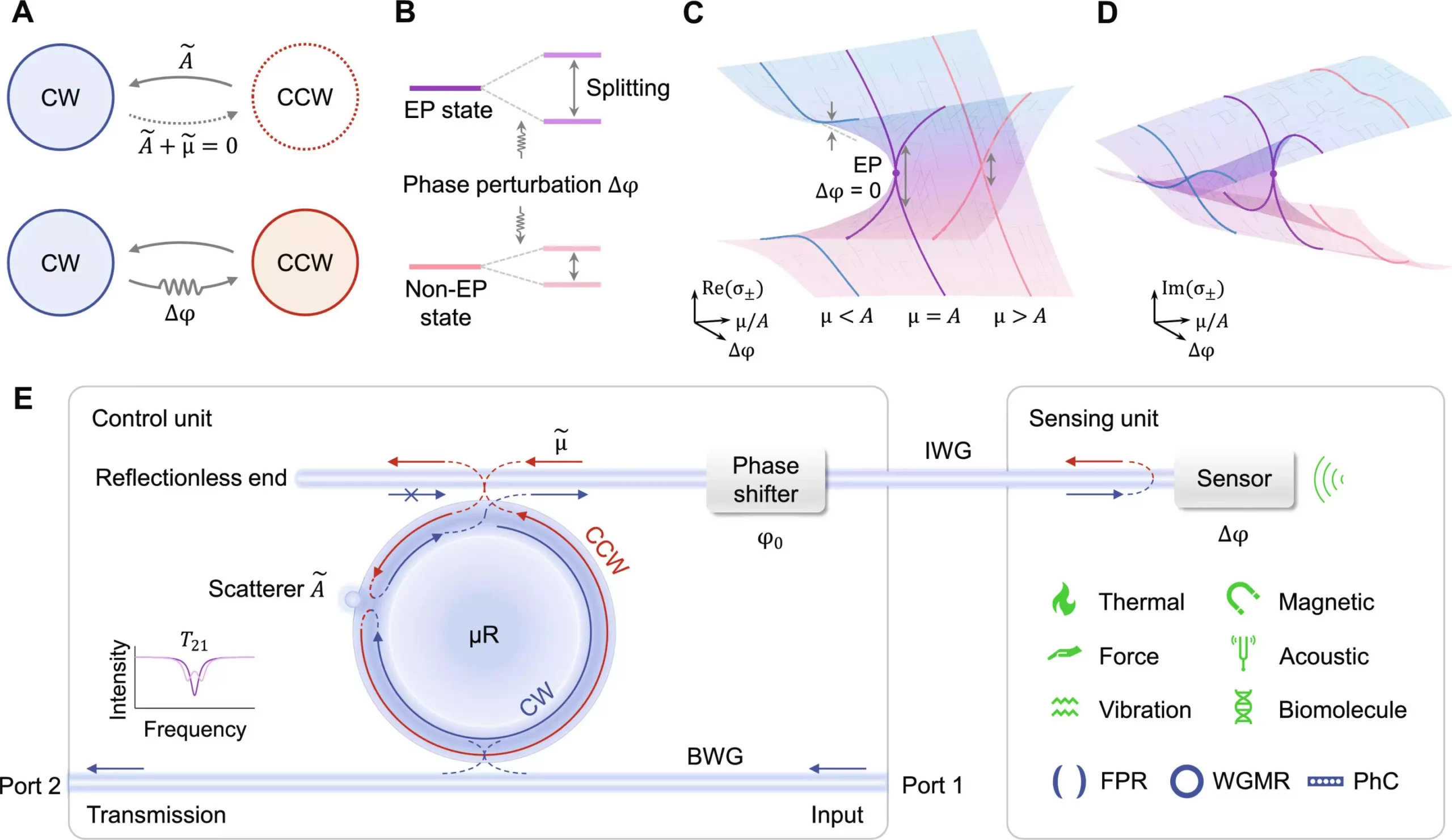Optical sensors play a crucial role in a wide range of scientific and technological applications, ranging from medical diagnostics to environmental monitoring. One of the key challenges in optical sensing has been improving sensitivity to detect faint signals amidst noise. Recent research led by Lan Yang from Washington University in St. Louis introduces a groundbreaking approach that leverages exceptional points (EPs) for advanced optical sensing.
EP-Enhanced Sensing Platform
Unlike traditional methods that require modifications to the sensor itself, Yang and his team have developed an innovative EP-enhanced sensing platform. This platform features an EP control unit that can be connected to external sensors, allowing for enhanced sensitivity without complex modifications to the sensor. By decoupling the sensing and control functions, Yang and his team have overcome the physical constraints that have limited the widespread adoption of EPs in sensor technology.
The versatility of the EP-enhanced sensing platform opens up new possibilities for a wide range of conventional sensors. This includes ring resonators, thermal sensors, magnetic sensors, and sensors for detecting vibrations or biological perturbations. By setting the control unit to an EP, the sensor can operate more effectively, even if it is not at an EP, resulting in a significant improvement in detection limits.
Enhanced Detection Limit
In a proof-of-concept experiment, Yang and his team demonstrated a six-fold reduction in the detection limit of a sensor using their EP-enhanced configuration compared to a conventional sensor. This enhancement in sensitivity allows for the detection of weak signals that were previously challenging to identify. By showing the potential of EP-enhanced sensing in improving detection limits, the team is paving the way for broader applications in various fields.
Moving forward, the research team is focused on expanding the application of EP-enhanced sensing in medical technologies. One area of particular interest is enhancing magnetic sensing, which could have significant implications for improving MRI technology. Current MRI systems require controlled environments, but with EP-enhanced sensing, the sensitivity and accuracy of these systems could be greatly enhanced.
Overall, the research conducted by Lan Yang and his team represents a significant advancement in optical sensing technology. By harnessing the power of exceptional points, they have developed a platform that can enhance the sensitivity of conventional sensors without the need for extensive modifications. This breakthrough has the potential to revolutionize optical sensing in a wide range of applications, from healthcare to environmental monitoring.


Leave a Reply